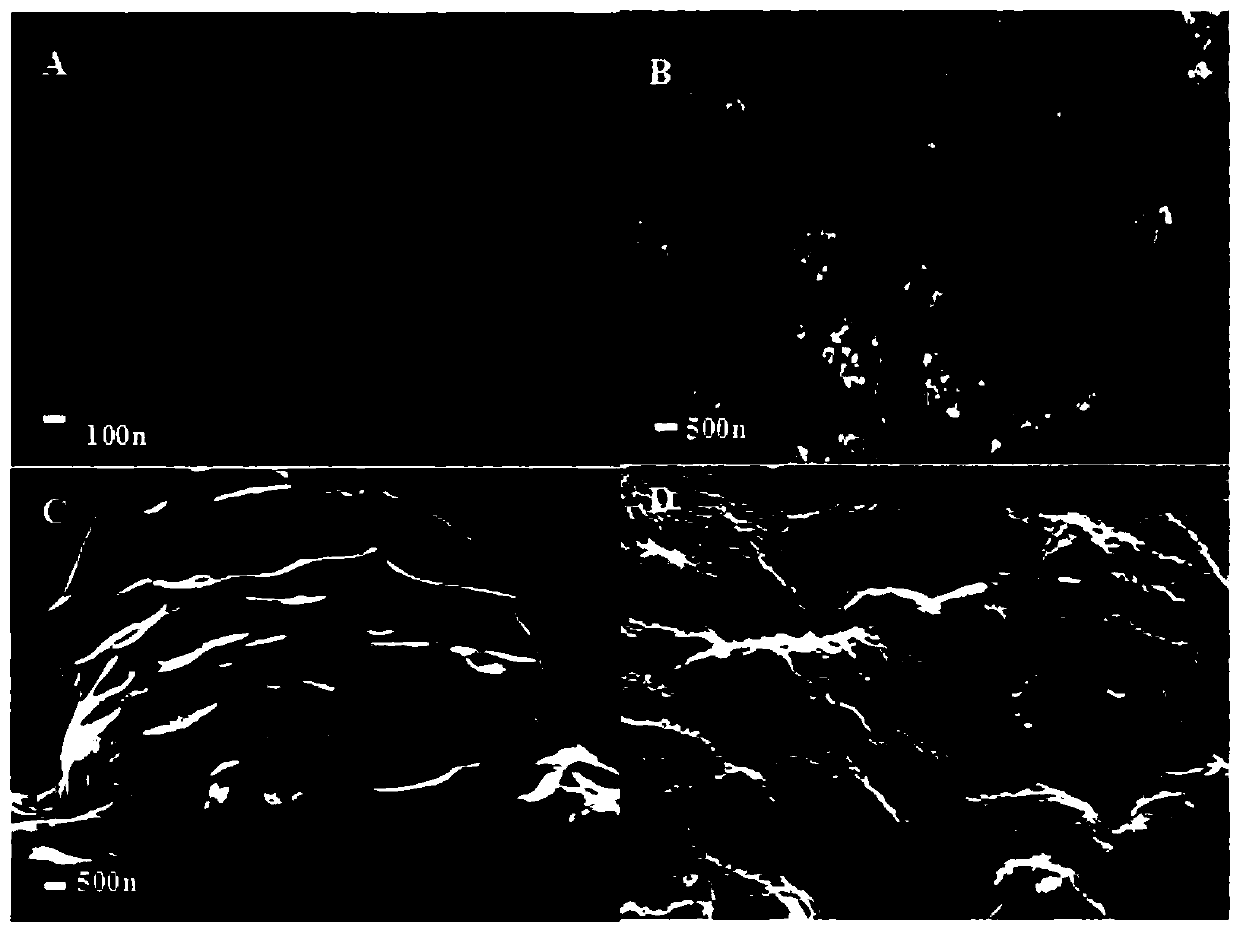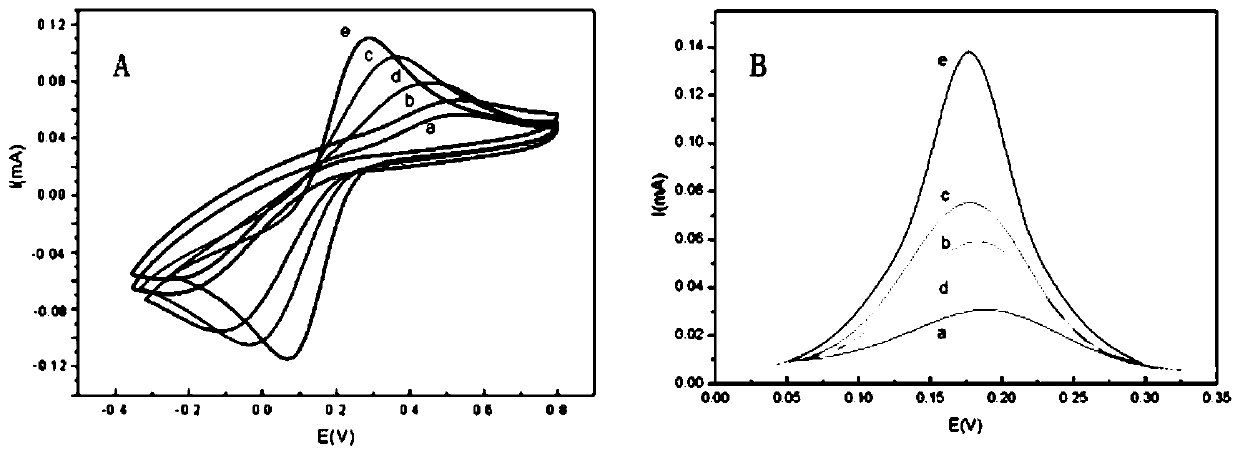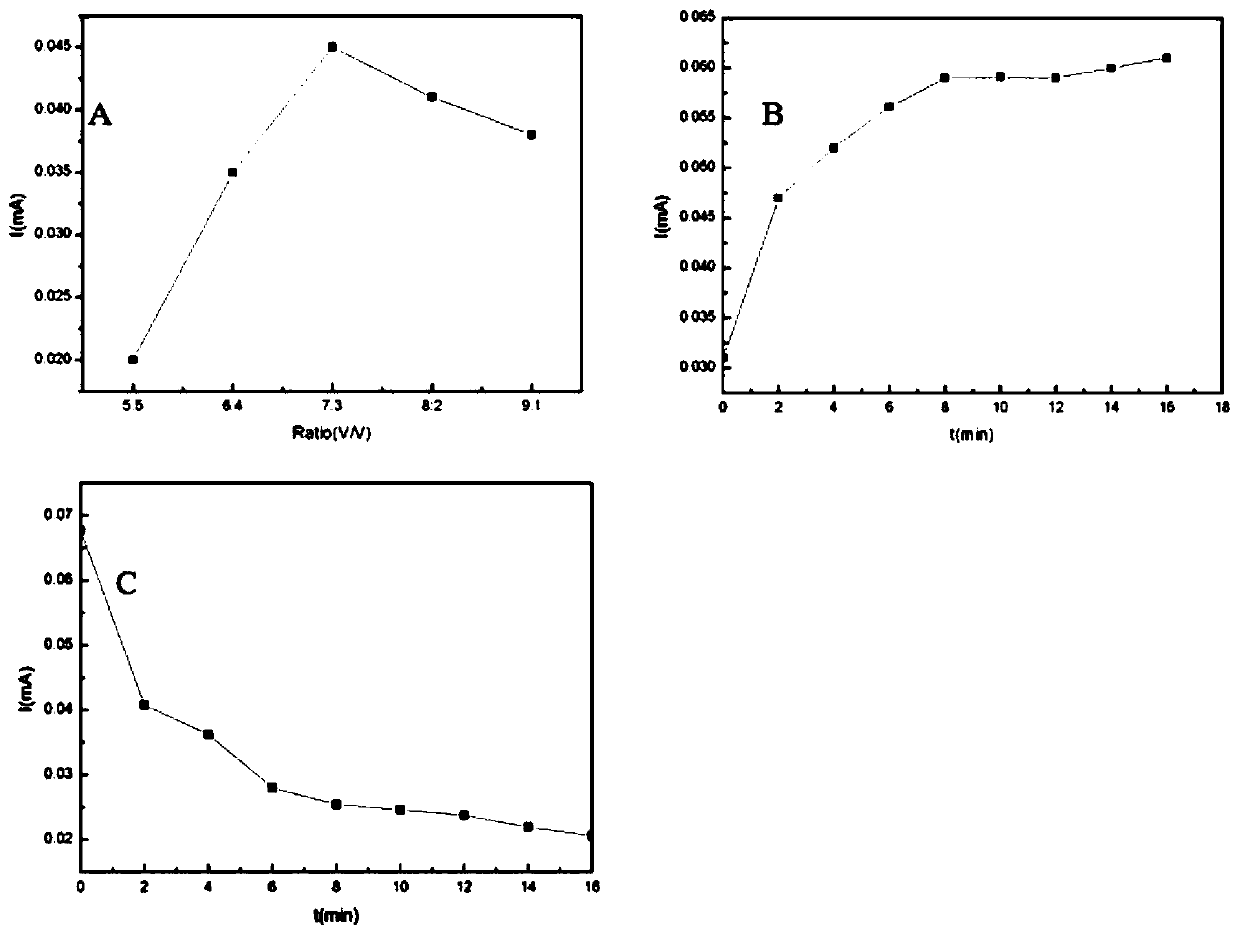Preparation method of graphene/polypyrrole-nano-composite-material-modified molecular imprinting sensor for nonylphenol detection and application
A composite material and pyrrole nanotechnology, which is applied in the field of electroanalytical chemistry and material synthesis, can solve the problems of time-consuming extraction process and complex instruments and equipment, and achieve the effects of ensuring sensitivity and selectivity, uniform and controllable thickness, and stable modified materials
- Summary
- Abstract
- Description
- Claims
- Application Information
AI Technical Summary
Problems solved by technology
Method used
Image
Examples
Embodiment
[0027]1. Put the prepared 10 mg graphene oxide (GO) into 15 mL of deionized water, sonicate for 1 h to mix the GO dispersion evenly; put 1 mL of pyrrole monomer (Py) in an ice-water bath, and stir vigorously 2 h; put the above mixed solution in a polytetrafluoroethylene reactor for hydrothermal reaction at 120 °C for 12 h; after centrifugation, the obtained material was washed with deionized water and ethanol three times in sequence, and finally dried in a freeze dryer. After drying, the graphene / polypyrrole nanocomposite material (GR / PPy) is obtained. Take 10 mg GR / PPy composite material in 10 mL distilled water to form a uniform dispersion, and scan ten times by cyclic voltammetry (cycle potential: -1.3 V~1 V, scan rate: 0.025 V / s) to obtain graphene / polypyrrole modified carbon electrode (GR / PPy / CE). Using the above-mentioned GR / PPy / CE as the working electrode, put it into 25 mL of ethanol, add 0.05 g of nonylphenol and 5.0 mmol of dopamine and mix well. GR / PPy modified n...
PUM
 Login to View More
Login to View More Abstract
Description
Claims
Application Information
 Login to View More
Login to View More - Generate Ideas
- Intellectual Property
- Life Sciences
- Materials
- Tech Scout
- Unparalleled Data Quality
- Higher Quality Content
- 60% Fewer Hallucinations
Browse by: Latest US Patents, China's latest patents, Technical Efficacy Thesaurus, Application Domain, Technology Topic, Popular Technical Reports.
© 2025 PatSnap. All rights reserved.Legal|Privacy policy|Modern Slavery Act Transparency Statement|Sitemap|About US| Contact US: help@patsnap.com



